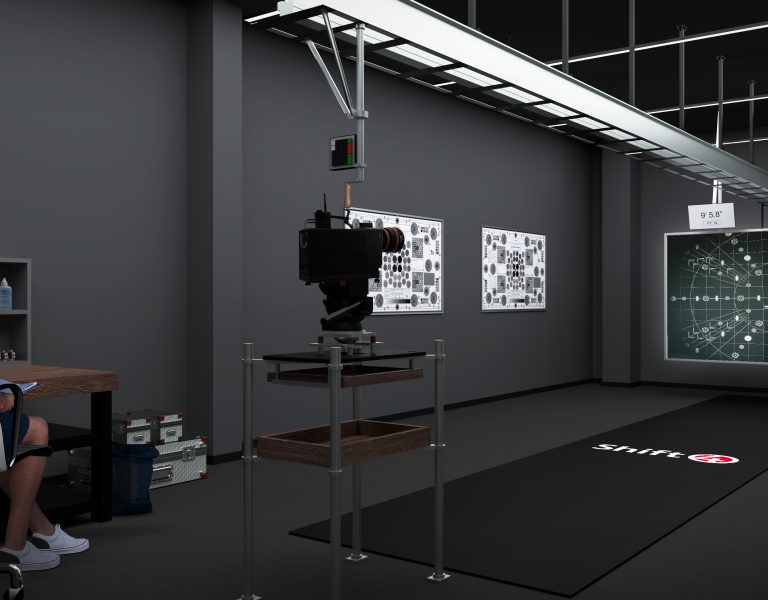When teaming up with debut director Nazrin Choudhury on Red, White and Blue, cinematographer Adam Suschitzky opted for a range of ARRI technology to help him develop the short film’s powerful visual language.
The working relationship between a director and cinematographer while making a film is crucial in both creative and practical terms. This is particularly so for someone making their directorial debut, as is the case with writer–director Nazrin Choudhury on her forthcoming short, Red, White and Blue.
To advise her not only about the technical hardware but also collaborate on the visual style of the production, Choudhury brought in DP Adam Suschitzky BSC, who suggested using a variety of ARRI technology, including an ALEXA 35 camera, Signature Prime lenses, and the new rear–mounted Impression V Filters.

Choudhury is a British–born writer who started her career in British television but more recently has had even more success in the US. She and Suschitzky first worked together on Fear the Walking Dead, including the first move into directing by one of the series’ regular actors, Lennie James. “The transition worked well for Lennie and Nazrin asked if I would work with her on her move into direction,” Suschitzky says. “I admired her work on Fear the Walking Dead and thought the script for Red, White and Blue was a powerful piece of work, so I wanted to be a part of it.”
Full details of Red, White and Blue are not yet available but the general outline is that it is set in contemporary Arkansas and features a road trip to Illinois. “The film has an emotional arc and the cinematography had to have a sense of poetic realism,” Suschitzky comments. “Nazrin generously invited me to collaborate on the visual language of the film and we worked out what this would be.”

“We reflected that through the choice of lens, the aspect ratio, the colour palette, and the depth of field,” Suschitzky explains. “That’s the role of a cinematographer, to visually translate what is in the mind of the director and writer, expanding the story through the lensing, lighting and camera movement.”
Despite the constraints of a short film budget, Suschitzky says he was “fortunate” to secure an ALEXA 35 for the shoot, as the camera is so new. “I had just finished shooting on the first ALEXA 35 in Canada and was blown away by its sophistication,” he comments. “Having decided on the camera, 1 wanted to find a lens set that would have the flexibility to define the two specific points of view in the story.”

During the development period of the film, Suschitzky visited the 2023 BSC Expo and saw the new Impression Filters series on the ARRI stand. He realised that these used in conjunction with ARRI’s Signature Prime lenses would enable him to create a distinct contrast between one section of the story to another. “Using the Impression V 330P filter gave us an almost 1960s/1970s anamorphic look, with a softer resolution, squeezed bokeh and lower contrast. For the final part of the film, I came up with the idea of not only removing the filter but also switching the aspect ratio from 2:40 to a 4:3 frame, from a very shallow depth of field to a massive depth of field and a cleaner, sharper, saturated image.”
When shooting began in LA earlier this year, Suschitzky says the key to success was being able to work very quickly. “Due to scheduling, the changes in look might have been several times a day, which could have been difficult,” he adds. “I was operating the camera, so it was up to my camera assistant, Jesse Amorratanasuchad, to fit the filter and change the aspect ratio. I was so impressed at how quickly this could happen. In the past, such radical ‘re-tuning’ of a lens might have had to happen back at the rental house, but not now with ARRI’s brilliant magnetic filters. Without doubt this is a game changer, handing back creative control to the cinematographer right there on set.”

–
Words: Kevin Hilton
This article was paid for by ARRI.






























